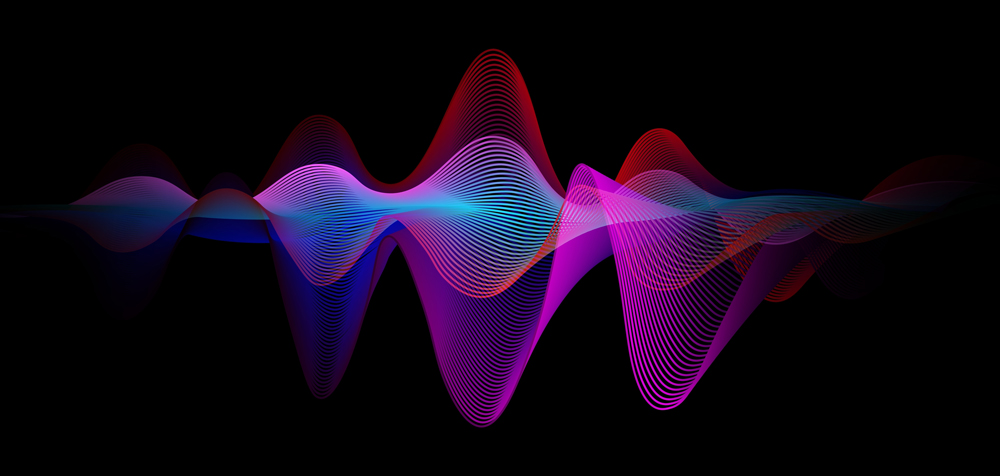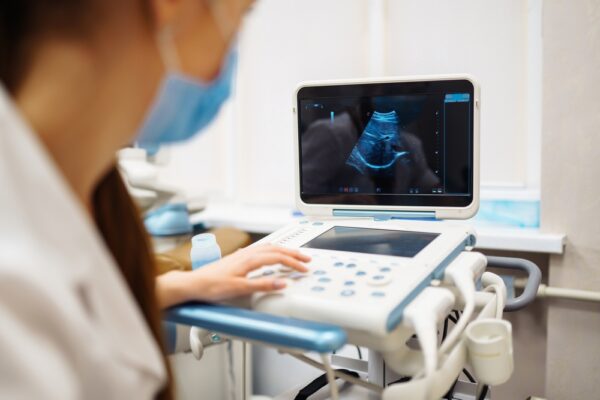Ultrasound Engineering: Sound Wave Propagation and Image Clarity
 Research and Development is a cornerstone of healthcare innovation: striving to overcome the challenges and limitations of today’s most relied-upon medical devices. In the realm of ultrasound technology and imaging, there’s strong focus on achieving optimal sound wave propagation and image clarity. Well-propagated sound wave frequency for images support more precise diagnostics imaging, allowing clinicians to make more informed observations across a wide range of internal medicine applications. Here, probe-design engineers play a pivotal role in enhancing the accuracy of medical diagnoses and patient care.
Research and Development is a cornerstone of healthcare innovation: striving to overcome the challenges and limitations of today’s most relied-upon medical devices. In the realm of ultrasound technology and imaging, there’s strong focus on achieving optimal sound wave propagation and image clarity. Well-propagated sound wave frequency for images support more precise diagnostics imaging, allowing clinicians to make more informed observations across a wide range of internal medicine applications. Here, probe-design engineers play a pivotal role in enhancing the accuracy of medical diagnoses and patient care.
The piezoelectric effect and transducer design
All-important in the realm of probe design is the piezoelectric effect: the ability of certain materials to generate an electric charge in response to mechanical stress — and, conversely, to deform when an electric field is applied. Ultrasound machines use these materials to send sound waves deep into the body: a phenomenon known as wave propagation.
A standard ultrasound transducer comprises a piezoelectric crystal, matching layers, and an acoustic lens. The piezoelectric crystal helps generate ultrasound waves, while the matching layers optimize the transmission of energy between the crystal and the body tissues. The acoustic lens focuses the ultrasound beam. As a result, the shape and size of a transducer can significantly impact wave propagation. Larger transducer elements generate lower-frequency waves, which penetrate deeper into tissues; smaller elements produce higher-frequency waves suitable for more superficial imaging.
To optimize transducer effectiveness, engineers must carefully select appropriate materials, design elements, and advanced technologies for improved imaging capabilities.

Sound wave frequency and attenuation
In diagnostic imaging, sending acoustic waves into the body is the first step. The next steps must navigate the nuances of frequency and attenuation — both of which significantly influence the quality and accuracy of the images produced.
- Frequency: Frequency is the number of oscillations (cycles) a sound wave completes per second, measured in Hertz (Hz). In ultrasound imaging, resolution and penetration depth are often inversely related. High-frequency ultrasound provides better resolution and is ideal for imaging superficial structures such as muscles and blood vessels. Low-frequency ultrasound, with its deeper tissue penetration, is more effective for internal organ and deep structure imaging.
- Attenuation: Engineers must also consider attenuation. Attenuation is the reduction in the intensity of ultrasound waves as they travel through tissues. Various factors contribute to attenuation, including absorption, scattering, and reflection. For example, soft tissues absorb ultrasound energy, leading to a decrease in signal strength as the waves travel deeper into the body. Addressing attenuation is crucial for maintaining image quality in clinical applications.
Researchers and engineers have developed advanced transducer materials with improved acoustic properties, employing signal-processing algorithms to enhance signal reception. Using contrast agents and harmonic imaging techniques can also improve imaging.

Reflection, refraction, and tissue properties
Acoustic excellence also encompasses an element of physiology: understanding how the body reflects and refracts waves, as well as how different tissue properties affect wave behavior.
- Reflection occurs when ultrasound waves encounter a boundary between two different tissues, redirecting a portion of the wave back toward the transducer.
- Refraction, on the other hand, involves the bending of ultrasound waves as they pass through tissues with varying acoustic properties.
- Tissue properties — including density, speed of sound, and impedance — determine how ultrasound waves propagate through the body.
Reflection and refraction create detailed ultrasound images, but they can also reduce image quality. Unwanted reflections can create reverberation artifacts, while refraction can distort the image geometry.
Engineers minimize unwanted reflections through thoughtful transducer design. This involves optimizing the shape and size of transducer elements, selecting appropriate frequencies, and using techniques such as beamforming to control the direction of emitted ultrasound waves. Acoustic-matching materials and coatings are employed to minimize reflection at the transducer-tissue interface.
Advances in imaging algorithms, including tissue characterization algorithms, allow differentiation of various tissues based on their acoustic properties. Sophisticated imaging systems incorporate techniques such as dynamic focusing and frequency modulation to optimize imaging parameters based on the changing acoustic properties of tissues.
Ultrasound acoustics are an evolving science
Ultrasound imaging and technology has benefitted from some of the most remarkable recent advancements in healthcare. Engineers have made great strides in unlocking the potential of sound wave propagation and image clarity, making diagnoses more precise and improving patient outcomes.
As we look to the future, the ongoing collaboration among engineers, medical professionals, and researchers promises even greater advancements in medical imaging, ensuring ultrasound scans can continue to benefit the physicians and patients who rely on them.


